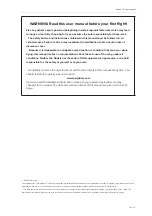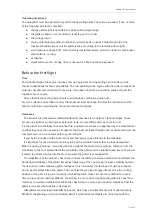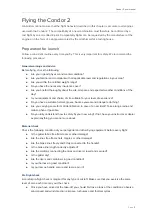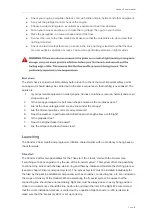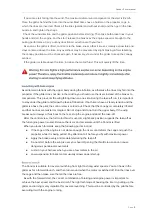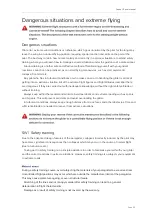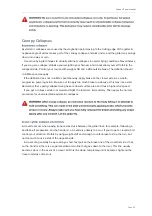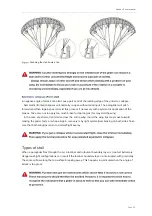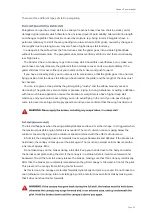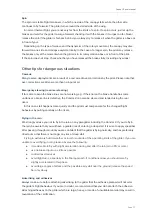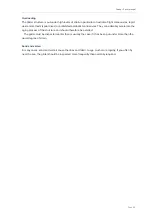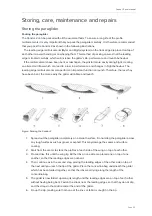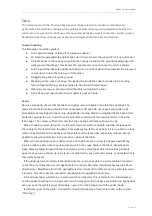
Condor 2 user manual
_____________________________________________________________________________________________________________________________________
●
In stronger winds, be prepared to take a couple of steps towards the canopy as it in
fl
ates and
rises.
●
Launch the wing by pulling upwards in an arc, not towards you.
●
Practice ground-handling regularly to improve your take-off skills!
●
The pilot must work actively to keep the glider on the ground in higher winds (wind speeds
from approximately 6 m/s), otherwise the glider may rise above the pilot unintentionally.
If you have taken off with a knot in the lines, you should wait until you have enough height and
distance from other pilots before you attempt to loosen the knot. Control with weight-shift and gently
brake the opposite side before attempting to open the knotted side by pulling on the brake line. Make
sure you don’t
fl
y too slowly and stall or spin the paraglider. If the knot does not open, land safely as
soon as possible.
The initial climb-out
After a successful launch, continue into wind using the brakes to regulate the rate of climb. Do not try
to climb too steeply. A powered paraglider behaves more like an airplane than a paraglider. If there
are no obstacles, it is much safer (and more impressive for the spectators as well) to
fl
y level for a
while after take-off and pick up speed before converting speed to height with a brief application of the
brakes.
An additional reason not to climb too fast is related to the risk of low-level engine failure. Although
the Condor 2 does not hang back during a steep climb as much as some other wings, a stall is still
more likely at low speed and high pitch angles. In addition, you should always be in a good position to
land in case of engine trouble. Don’t take unnecessary risks and
fl
y with a wide margin of error.
Depending on the characteristics of your engine, once in the air you may be faced with a torque
effect. This may cause the wing to turn, so be prepared to counteract this effect with suitable braking,
put a harness support on the opposite of the turn, it will help you counter the torque effect without
having too much drag. If such a situation occurs during the climb-out with "slow" trims and maximum
power, be pay attention to the risk of stalling. Safe operations and management of your engine
depend on your knowledge and equipment.
Engine-induced oscillations
Certain con
fi
gurations of weight, propeller diameter, engine power and hang point positions on your
engine frame may cause serious oscillations. The pilot is lifted to one side by the torque effect, swings
down due to his weight and is then lifted again and so on. To counter this effect:
●
change the throttle setting
●
counteract the pendulum movement with a slight brake input
●
weight shift to the side opposite the engine torque
●
adjust the trimmers to dampen the oscillation
Page 16
Summary of Contents for Condor2
Page 1: ...v1 0 March 2022...
Page 48: ...www gingliders com...

